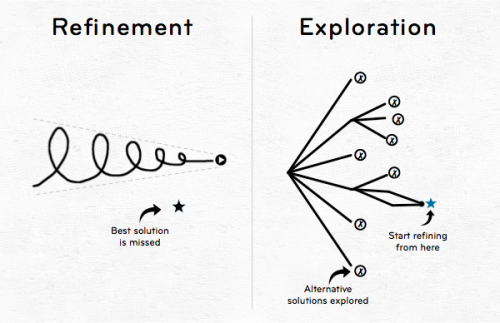A couple in their very first relationship often don’t get married; your first job out of school is likely not where you will retire; when car shopping, buying the very first car you look at probably isn’t the best approach. There are a lot of “firsts” in life that you shouldn’t get overly attached to, and ideas are no different. Let them be very simple, cheap thoughts early on.
This may seem counter-intuitive because, in design, we’re taught to really focus and hone in on a solution. Pay attention to every detail. It’s hard to hear things like that while also working fast and somewhat carefree. It doesn’t feel like they match up.
But, effort is directly related to how attached to an idea you become, and time is directly related to effort. The more effort and time you put into an idea, the harder it will be to let it go if it doesn’t work. Visualizing alternatives can unintentionally be skewed by the idea you went all-in on. So avoid all-in up front. Often enough, a simple sketch can give you the insight into whether or not it’s worth pursuing. You can scratch stuff out, make notes, and literally try anything you want.
So, a reminder: don’t run the risk of designing yourself into a box by over-dedicating to an early-stage idea. Keep the jobs-to-be-done in mind, but at first, try keeping the effort low. It free’s the mind to explore. Once you feel like the direction you want to go in has been realized, dig in a little deeper and put in the time and effort to see it through.


